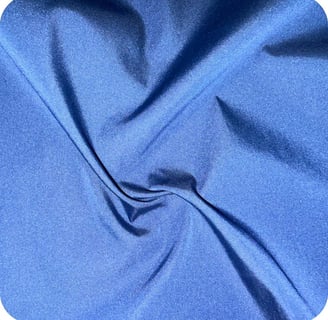Origins of Polyester Yarn
Polyester yarn, one of the most commonly used materials in the modern textile industry, was invented by chemists in the 1930s and is made by extracting raw materials from petroleum through a chemical process. Due to its high strength, wear resistance, and wrinkle resistance, polyester yarn is widely used in clothing, home textiles, and industrial products. This article provides a detailed overview of the origins, production process, and development of polyester yarn.
CC Textile WeChat: CC-Jacquard WhatsApp:+8615306267080
9/27/20243 min read


1. The Origins of Polyester Yarn
The production of polyester yarn began in the early 20th century when scientists were researching new synthetic fibers. In the 1930s, British chemists J.R. Winfield and J.T. Dickson successfully synthesized a new material called polyester. Later, in the 1940s, the American company DuPont developed polyester fibers for commercial production. This new material not only served as a substitute for natural fibers but also offered several performance advantages.
Polyester yarn is made from raw materials extracted from petroleum. Through a cracking process, basic chemical compounds such as purified terephthalic acid (PTA) and ethylene glycol (EG) are obtained. These two substances undergo an esterification reaction to form polyester polymer, which is then produced into filaments or staple fibers through melt spinning and further spun into yarn.
2. The Production Process of Polyester Yarn
(1) Extraction of Raw Materials:
The main raw materials for polyester yarn are purified terephthalic acid (PTA) and ethylene glycol (EG), both of which are extracted from petroleum. Through a cracking process, complex compounds in petroleum are broken down into simpler molecular structures, and further processing yields the basic chemicals for polyester production.
(2) Polyester Synthesis:
PTA and EG undergo an esterification reaction to produce polyester polymer, which has a long-chain structure that gives polyester yarn its excellent physical properties. In this reaction, PTA and EG combine under the action of a catalyst to form linear polyester chains, resulting in a high-molecular-weight polyester.
(3) Melt Spinning:
The polyester is melted at high temperatures and then extruded through spinnerets to form liquid filaments. This process is known as melt spinning. The filaments are quickly cooled to form polyester filaments or staple fibers. The filaments can be used directly in weaving, while the staple fibers require further processing into yarn.
(4) Yarn Spinning Process:
Polyester filaments can be directly used in yarn production, while staple fibers must undergo spinning processes such as carding and drafting. The staple fibers are twisted into yarn using methods like ring spinning or air-jet spinning. The resulting polyester yarn may undergo additional treatments such as dyeing or coating depending on the specific application.
3. Development and Applications of Polyester Yarn
The development of polyester yarn has driven rapid advances in the modern textile industry. Compared to natural fibers, polyester yarn offers several advantages, including:
• High Strength and Durability: Polyester yarn is stronger and more durable than cotton or wool, making it ideal for producing long-lasting garments and industrial textiles.
• Wrinkle Resistance: Fabrics made from polyester yarn are less likely to wrinkle, making them popular for wrinkle-free clothing and home textiles.
• Water Resistance: Polyester fibers have some hydrophobic properties, making them suitable for outdoor clothing, sportswear, and waterproof fabrics.
Polyester yarn is widely used in everyday clothing, home textiles, and industrial textiles. For example, it is used to produce sportswear, outdoor apparel, bed sheets, carpets, and industrial filter fabrics. With growing environmental awareness, the production process of polyester yarn has also improved, such as using more eco-friendly processes and recyclable materials to produce recycled polyester yarn (RPET).
4. Future Trends in Polyester Yarn
As technology continues to advance, the performance and production efficiency of polyester yarn have been significantly improved. For example, the application of nanotechnology has enhanced the functionality of polyester yarn, leading to the development of new types of polyester yarn with antibacterial, UV-resistant, and other properties.
Additionally, environmentally-friendly polyester yarn is expected to be a key development area in the future. Recycled polyester yarn (RPET) is already widely used in clothing and home textiles. As technology continues to mature, the use of recycled polyester yarn will become even more widespread. By recycling discarded plastic bottles and textiles, recycled polyester helps conserve resources and reduce environmental pollution.
Conclusion
Polyester yarn is made from raw materials extracted from petroleum, synthesized through chemical processes, and spun into yarn through various spinning techniques. It is a synthetic fiber material that is widely used in the textile industry. With the advancement of technology and growing environmental awareness, the future of polyester yarn is promising. Whether in everyday garments or industrial products, polyester yarn plays a crucial role.
Get in touch
Address
Suzhou CC Textile Co.,LTD
4101 West Ring 2nd Road, Shengze Town, Wujiang District, Suzhou, Jiangsu Province, China
ZIP Code:215228
